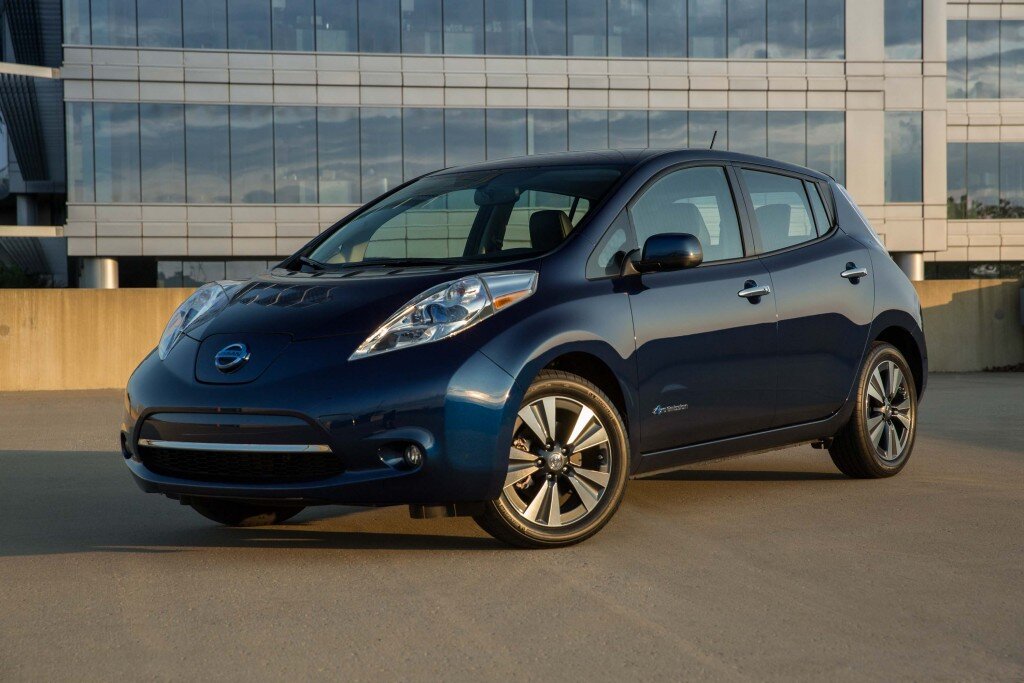Keeping your Nissan LEAF?
Replacing the battery pack on a decade-old EV
By Stanton Zeff: Member, North Texas ELECTRIC AUTO ASSOCIATION
First Generation Nissan LEAF
My first generation (Gen1) 2011 Nissan LEAF was almost 10 years old when I began to wonder if I should sell it. The first battery pack had lasted approximately 4 years before it was replaced under warranty by Nissan (down 4 capacity bars); the second pack, while doing much better after 5 years, was nevertheless beginning to show its age (down 2 capacity bars).
If I was to keep the car, I would need to replace the battery pack (yet again), and if I were to go to that trouble (and expense), then it would make sense to purchase something larger than the current 24 kWh version.
I started researching Nissan's second generation (Gen2) LEAF offerings—both new and "salvaged"—knowing that Nissan was in the business of selling new cars, not battery packs for old cars.
The Gen2 LEAFs came in two different capacities: 40 kWh and 62 kWh, both larger than the 24 kWh in my Gen1 LEAF. Additional research indicated that while the 40 kWh pack was an exact mechanical match to my LEAF (dimensions, mounting holes, etc…), the 62 kWh pack was not. There are also ground clearance and weight issues with the larger pack that would require additional modifications to my LEAF, and I did not see the need for the extra capacity.
Both packs would require electrical modifications in the form of a CAN-bridge converter and adapter cable, but more on that later. The first order of business was to locate and purchase an aftermarket 40 kWh Gen2 LEAF battery pack, and the local Dallas salvage/car auction was just the place to do it.
Successful battery pack search
After months of monitoring the Copart auction lists, I finally found what I was looking for: a 2020 LEAF SV with only 835 miles! Now came the tasks of:
Arranging an in-person inspection of the car, including a Leaf Spy reading on the health of the battery pack
Navigating the rules/regulations for an individual (non-dealer/broker) to purchase a car at auction
Note: it just so happens that the laws in Texas allow individuals to buy vehicles with a Salvage Title (vs Clean Title), which is not true for all states.
After setting up an account with Copart, I proceeded to upload the necessary documents and make the necessary deposit to qualify for bidding. Targeting a local (Dallas) vehicle had two distinct advantages:
The ability to conduct an "on site" inspection of the car prior to auction
Extremely low shipping costs
The former allowed me to obtain a state-of-charge (SoC) and battery health estimate (via LeafSpy). Both turned out to be even better than I had hoped due to the fact that the car met an early demise.
As auction day approached, I followed other similar LEAF auctions, both for bidding practice and pricing expectations. Preparation paid off, as the "live" portion of a particular vehicle's auction can literally last a matter of seconds! I was able to complete payment and arrange for shipping the same day of the auction; my car was delivered only a few days later.
22-36 PIN adapter
New challenges to navigate
With my new battery pack in hand, it was time to tackle another critical element prior to the actual battery swap: the CAN-bridge converter and associated adapter cable.
Almost every production EV links the battery pack to the car—or more specifically, the Battery Management System (BMS)—with a unique code. This makes it difficult for third party entities to remove/install battery packs outside of an authorized repair network.
Therefore, something like a CAN-bridge is required to translate messages between the "old" BMS and "new" battery pack. Even more importantly, one needs a way to program the new battery pack's unique code, or "spoof" it, such that the two can talk to each other unimpeded.
For various reasons, I chose the latter solution from Dala's EV Repair, a shop that also supplies the 22-pin to 36-pin adapter cable required to adapt the "old" control interface to the "new" battery pack. Now all that remained was the actual battery swap, which was performed at Chris Murphy's Automotive.
This consisted of replacing the over 600-lb 24 kWh pack in my car with the over 700-lb 40 kWh pack from the salvage car, as well as installing the 22-pin to 36-pin adapter cable.
Bridge install
One key difference between the Gen1 and Gen2 pack designs is the number of electrical connections: the Gen1 pack has two (power/control) while the Gen2 pack has three (power/control/heat). Nissan added an integrated battery warmer to the Gen2 pack design that my Gen1 car did not recognize, so I simply filled that port with silicone sealant, providing an electrically insulated weather-proof seal when dry.
Tip: The battery covers (underneath the car) should follow the battery pack. In other words, I returned the battery covers from the salvage car to the 40 kWh pack after it was installed in my car.
All that remained was to reconnect the high-voltage disconnect (under the rear seats) and 12v battery in my car and start it up.
Thanks to a visionary EV platform developed over a decade ago, some luck finding a "fresh" 40 kWh battery via salvage, and an ingenious CAN-bridge implementation, I managed to double the current range of my 2011 Nissan LEAF!
Bridge wiring




